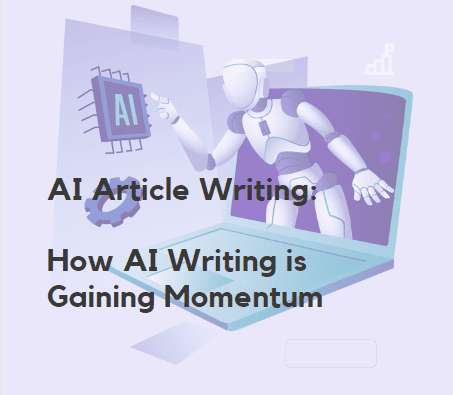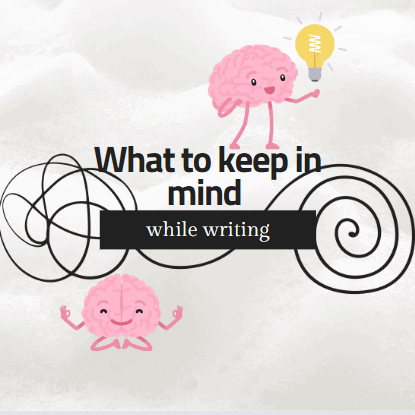Beginner’s Guide: Crafting a Blog Content Strategy with AI (Even on a Low DR Site)
AI-Powered Content Strategy: Practical Tips for Boosting Your Results
Introduction
Are you ready to level up your blog content strategy game?
It can be frustrating, especially if your website’s Domain Rating (DR) is not where you want it to be. But guess what? I’ve got a secret weapon for you: AI!
AI will help create, publish, and manage your blog’s content like a pro. It’s not just for the big tech giants anymore – for bloggers like you and me who want to take our online presence to new heights!
I know what you might think: “But wait, isn’t AI bad for SEO?” Well, let me put your mind at ease. AI can change your content creation process by focusing on creating high-quality, valuable content that your readers love. It’s like having a secret weapon in your blogging toolkit that can help you work smarter.
Crafting a Blog Content Strategy with AI
Key Takeaways
- AI is a powerful tool for enhancing your blog’s content strategy, even if your website has a low Domain Rating (DR).
- AI can assist with keyword research, topic ideation, content generation, and optimization, but it should be used to complement human expertise and creativity.
- When using AI for content creation, maintain your unique brand voice and ensure transparency with your audience.
- Keyword research with AI should focus on long-tail keywords with low competition and align with your audience’s search intent.
- AI-powered tools like Ahrefs, SEMrush, and Google Analytics can help you track your content’s performance and identify improvement areas.
- Exploding Topics and Google Trends are AI tools that help you discover trending topics and products in your niche.
- Finding the right balance is The key to crafting a blog content strategy with AI. This balance involves using AI tools and human input while continuously adapting your strategy based on data-driven insights.
AI Tools for Content Strategy (Balance & Transparency)
AI can be your go-to buddy for various aspects of your content strategy. It can help with keyword research, finding the right topics to write about, generating content ideas, and even optimizing your existing content.
AI-powered tools can analyse vast amounts of data to identify your blog’s most relevant and profitable keywords. They can also suggest topic ideas based on your target audience’s interests and search behaviour.
Regarding content creation, AI can assist in generating outlines, paragraphs, or even entire articles. However, it’s important to remember that AI is your assistant, not your replacement. Your human expertise, perspective, and creativity are still essential for producing high-quality, engaging content.
Transparency is key when using AI in your content strategy. Be open with your readers about using AI tools to enhance your blog. This is especially important considering user-generated content (UGC) guidelines set by search engines and social media platforms.
Crafting a Blog Content Strategy with AI: Finding the Right Words with AI

Keyword research is the foundation of your content strategy, and AI tools can help you find the perfect words to target. These tools can uncover niche-related topics and long-tail keywords your audience is searching for.
When conducting keyword research, focus on aligning your selected keywords with your audience’s intent and the search engine’s understanding of that intent. This ensures that your content meets your readers’ needs and ranks well on search engine results pages.
Given your website’s low DR, selecting keywords with realistic competition levels is crucial. Don’t aim for highly competitive keywords dominated by high-authority websites. Instead, target long-form keywords with zero search volume.
By being the first to write about these emerging topics, you can establish yourself as an authority and rank quickly as people start searching for them. This strategy lets you get ahead of the competition and attract organic traffic to your blog.
Here are some prompts I use when using AI to help create topic and cluster keywords:
For Keyword Clustering:
“You are an SEO specialist with knowledge of recent Google updates on Helpful content updates, topic relevance, and EEAT. Help me analyze these keywords and group them in clusters depending on their topic relevance.”
For Topic Generation:
“You have been an SEO executive in a digital agency working with the most successful affiliates and e-commerce brands. Use the keywords shared below to help generate 10 unique topics that focus on the keywords and will help improve click-through rates and rankings on search engines.”
Creating High-Quality Content with AI Assistance
AI can be a lifesaver when creating high-quality content for your blog. If you’re struggling with writer’s block or need fresh ideas, AI-powered tools can help you generate topics and suggest outlines for your articles.
When using AI writing tools, it’s essential to maintain your unique brand voice. While AI can assist with generating content, it’s up to you to infuse your personality and perspective into the final piece.
Always remember to edit and fact-check any AI-generated content before publishing. Human oversight is crucial to ensure accuracy, coherence, and readability. Use AI as a starting point, but put your spin on the content to make it truly valuable for your readers.
Tips for using AI writing tools while maintaining your unique brand voice
- Define your brand voice: Before using AI tools, clearly define your brand’s tone, personality, and values. Create a style guide that outlines your brand’s preferred language, sentence structure, and formatting.
- Customize AI tool settings: Many AI writing tools allow you to customize settings to align with your brand voice. Adjust tone, formality, and creativity to match your brand’s style.
- Provide context and examples: When inputting prompts into AI tools, provide context and examples demonstrating your brand voice. This helps the AI understand and mimic your preferred style more accurately.
- Edit and refine AI-generated content: AI-generated content should be treated as a starting point. Take the time to edit, refine, and add your personal touch to ensure the final piece aligns with your brand voice.
- Maintain consistency: Apply your brand voice consistently across all AI-generated content. Regular review and quality control can help maintain a cohesive brand presence.
- Combine AI with human creativity: Use AI tools to generate ideas, outlines, or rough drafts, but allow your human creativity to shine through. Infuse your unique perspective, experiences, and insights into the content.
- Train your team: If you have a content team, ensure they are trained on how to use AI tools effectively while maintaining your brand voice. Provide guidelines and examples to ensure consistency.
Optimizing Content for Search Engines (and Humans)
AI can be a powerful ally in optimizing your blog content for search engines and human readers. By analyzing your existing content, AI tools can identify gaps and areas for improvement, helping you create more comprehensive and valuable articles.

Here is a prompt you can use for this:
“Look at this article and determine whether it meets the search intent for the user and recommend more ideas that will help improve the article and deliver more knowledge on the topic in H1.”
Use AI to analyze your competitors’ content to stay ahead of the competition. Look for subheadings and answers they include that you can incorporate into your blog posts. This ensures your content covers all the essential aspects of a topic.
When it comes to on-page optimization, AI can assist in crafting compelling headlines and meta descriptions. However, the quality of AI suggestions depends on your prompts, so take the time to create specific and detailed prompts.
While technical SEO is important, don’t forget about user experience. Use AI to help you create content that is easy to read, navigate, and engage with. Focus on providing value to your readers and keeping them on your site longer.
Measuring Success: AI and Content Analytics
Measuring the success of your AI-enhanced content strategy is crucial for continuous improvement. AI tools can help you track key performance indicators like clicks, engagement, and conversions, clearly showing what’s working and what’s not.
You can make data-backed decisions to refine your content strategy by leveraging AI-driven insights. Identify top-performing articles, understand audience preferences, and adapt your content creation accordingly.
AI can also be a valuable tool for staying on top of trending topics and products in your niche. AI can help you discover new content opportunities and stay relevant in your industry by analysing social media, search trends, and user behaviour.
Use these AI-powered insights to create a feedback loop that constantly improves your content strategy. Review your analytics regularly, make data-driven adjustments, and watch your blog’s performance soar.
Author’s Take:
I use Ahref in my content analysis. It helps me identify content gaps, see what my competitors are ranking for, and explore suitable keywords. I have landed plenty of keywords that had zero search volume but actually brought hundreds of visitors.
Crafting a Blog Content Strategy with AI: AI Content Performance Tracking Tools
- AI-powered tools like Ahrefs, SEMrush, and Google Analytics can be game-changers for tracking your content’s performance. Let’s take a closer look at how Ahrefs can help you monitor your blog’s success:
- Content Explorer: Ahrefs’ Content Explorer allows you to search for top-performing articles in your niche. To inform your content strategy, you can analyze their backlink profiles, social media shares, and engagement levels.
- Site Audit: The Site Audit feature helps you identify technical SEO issues that may be hindering the performance of your content. It checks for broken links, duplicate content, and other on-page factors impacting your rankings.
- Rank Tracker: With the Rank Tracker, you can monitor your blog’s search engine rankings for specific keywords. This helps you understand which content drives organic traffic and needs improvement.
- Site Explorer: Ahrefs’ Site Explorer deeply analyses your blog’s backlink profile. It allows you to see who’s linking to your content, identify high-quality link opportunities, and monitor your competitors’ linking strategies.
- Content Gap Analysis: This feature allows you to compare your blog’s content with your competitors’. It identifies keywords and topics that your competitors rank for but you don’t, helping you discover new content opportunities.
Exploding Topics and Google Trends AI Trending Topics Discovery tools
AI-powered tools like Exploding Topics and Google Trends can help you uncover trending topics and products in your niche.
Exploding Topics uses machine learning to analyze millions of online conversations, identifying emerging trends before they go mainstream. By subscribing to their newsletter or using their web app, you can discover new content ideas and stay ahead of the curve.
Google Trends is a free tool that shows the popularity of search terms over time. You can use it to identify seasonal trends, compare keyword popularity, and find related queries.
For example, if you have a blog about outdoor gear, you can use Google Trends to see which products are gaining traction. You might discover that “inflatable kayaks” are experiencing a surge in search volume, indicating a potential content opportunity.
By leveraging AI tools to discover trending topics and products, you can create timely, relevant content that attracts organic traffic and positions your blog as a go-to resource in your niche.
Conclusion
In conclusion, a properly crafted content strategy powered by AI can be a game-changer for your blog, even if you have a low Domain Rating. You can create a strategy that drives results by leveraging AI tools for keyword research, content creation, optimization, and analytics.
However, it’s important to remember that content marketing is an ongoing process. Your strategy should adapt as your blog grows and your audience’s needs change.
Finding the right balance between AI tools and human expertise is the key to long-term content success. Use AI to streamline your processes, gain insights, and generate ideas, but always infuse your unique perspective and creativity into the final product.







